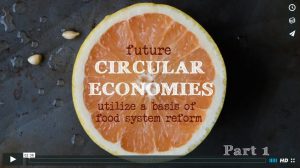We need commitment and infrastructure to evaluate specific agricultural practices deemed most unsafe and/or concerning to our nutritional and national security. Future global competitiveness will be based on a deepening understanding of the laws of natural order. The opportunity to continue to lead comes from adoption of this reality, by thinking alternatively to our current linear and wasteful process by mitigating mounting risk associated to a shrinking planet. Long-horizon investors thus must take ownership of proven innovations that diversify our production portfolios of clean food, water and energy to remain responsible to their stakeholders. This approach becomes increasingly circular in thinking and practice with broader investment professional & stakeholder commitment.
Tendering recommendation and strategies for gaining public & private partnership, with the (i) Entrepreneur Agrarian Fund, (ii) Ecology Management Systems, in essays (iii) atWhatCost – Aaron Niederhelman explores how doing well by doing great good is the inevitable future of investing in food production. Through empowering societal awareness to make better decisions in controlling their own well-being & financial state – immersive circular and holistic economies bolstered public & private investment pay for the future of human and planetary health through better agricultural practice. These investments in systemic & technological innovations result in healthy, accessible and fiscally savvy nutrient value for more. Through which, we return food from an afterthought of human existence to a cornerstone of wellbeing & longevity.
Simply, Aaron explains “We must start acting like responsible adults in managing this inherited dowery of earth’s fertility. That’s just commonsense that seems to get strained by tainted short-horizon perspective, hubris and blind credulity. As part of any estate planning, how is the health of the planet not of greatest concern in passing wealth & security to generations next? Without accounting for the basis of all future economies, the premise of the plan is intrinsically flawed.”
part 1: Investing in Circular Economies



